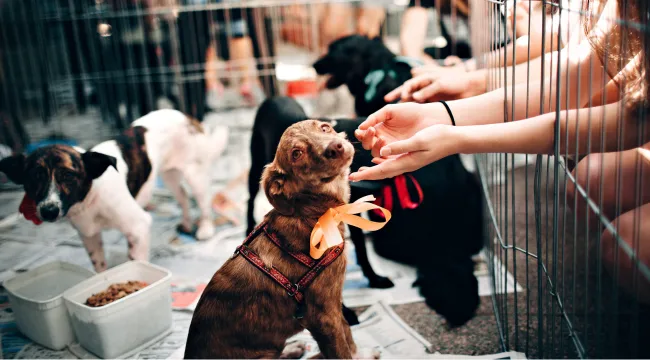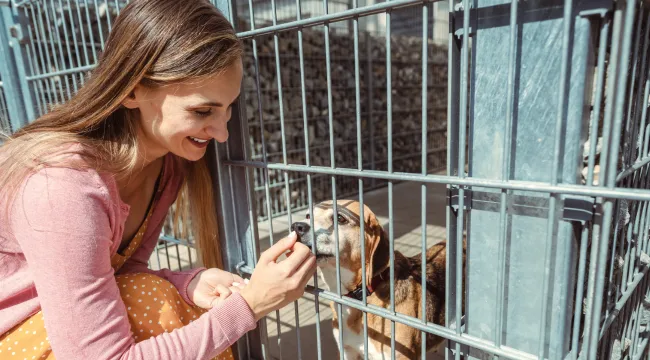
There are few things that you could be more excited about than adopting a puppy. Having this bundle of joy come into your home is something that you just can’t compare to anything else. It’s a sensation that everyone should experience at least once in their life while treasuring each moment.
As wonderful as this experience is, it isn’t something that you can just decide to do in the spur of the moment. Adopting a puppy is something that requires a lot of thought and preparation. Responsible pet owners know that there are many important steps involved in getting their homes and lifestyles ready for a new puppy, starting with researching and understanding the personality and energy level that best fits your needs. To do this, make sure you keep the following three things in mind:
1. Puppy Care
Owning a puppy is something that really takes a lot of time and discipline. So, if you’re someone who has a busy lifestyle and isn’t at home that much, this isn’t fair to the puppy. Especially in the early months, you’re going to need to make sure you’re very attentive to your dog. Work hard to form a bond with them and make them a primary concern.
Veterinary care is something that all puppies need. Even the healthiest pups are at risk of experiencing an unexpected accident or illness. It’s also a good idea to look into getting pet insurance. Veterinary care can be costly, and it’s best to prepare ahead of time for these expenses.
2. Choosing the Right Pet and Preparing Yourself and Your Family
Before welcoming a new furry friend into your home, it’s essential to prepare yourself and your family for the journey ahead. Taking the time to consider your lifestyle and needs can lead to a harmonious and fulfilling companionship. Here are some key steps to take before adopting a pet:
Exploring Fostering Options
Fostering a dog or cat from a local shelter can provide valuable insight into pet ownership. Organizations like PetFinder offer a convenient way to connect with shelters and explore fostering opportunities. Not only does this allow you to experience pet care firsthand, but it can also help you decide on the best fit for your family.
Finding the Perfect Match
Selecting a pet that aligns with your family dynamics and lifestyle is crucial. Ask yourself and your household members how a dog or cat will integrate into your lives. Consider the following factors:
- Outdoor Adventures: If you’re an outdoor enthusiast, seek a dog that can accompany you on hikes, camping trips, or other outdoor activities.
- Limited Space: If you live in an apartment, smaller dog breeds or cats might be a better choice.
Daily Routine: If you’re away from home often, be aware of separation anxiety in certain breeds and plan accordingly. - Quiet Companionship: Cats, known for their independence, can be an ideal choice for those who appreciate tranquility.
Choosing the Right Pet
When selecting your new companion, several aspects should guide your decision-making process:
- Energy Levels: Match your activity level with the pet’s energy to ensure a harmonious partnership.
- Adult Size: Consider the pet’s potential size when fully grown to ensure a comfortable living arrangement.
- Compatibility: Evaluate how the pet interacts with other animals and children to promote a harmonious household.
- Noise Level: Different pets have varying noise levels; choose one that suits your tolerance.
- Responsibilities: Clearly define caretaking responsibilities within your family:
- Feeding
- Clean-up duties
- Daytime check-ins
- Daily exercise routines
Preparing your family and home for the arrival of a new pet involves careful consideration and planning. By taking these factors into account, you can ensure a smooth transition and create a loving environment for your new furry family member.
3. Building a Connection Before Bringing Them Home

Engaging with your potential new pet before finalizing the adoption is a crucial step in ensuring a harmonious companionship. Here’s why spending time with them beforehand matters:
Personal Interaction Matters
While shelters and breeders provide useful information, nothing compares to firsthand interaction. Pay a visit to the shelter or breeder to meet the dog or cat you’re considering. Schedule a play session to better understand their personality and behavior.
Tap into Staff Expertise
Utilize the knowledge of shelter staff. They can offer valuable insights into the animal’s temperament, history, and unique traits. This information can guide you in making an informed decision that aligns with your lifestyle.
Evaluating the Connection
Spending time together allows you to gauge the initial chemistry between you and your potential pet. The bond you form during this interaction sets the foundation for a lasting and loving relationship. Remember, this is the beginning of a multi-year journey, so investing time upfront is well worth it.
By investing time and effort in these early interactions, you’re laying the groundwork for a strong and fulfilling bond that will grow and flourish over time.
4. Having Enough Space
Another thing you need to consider is the amount of space you have in your home to accommodate your new family member. Although a puppy might seem so small when you’re considering your options, they take up more space than you might think. Consider your prospective pet’s size, personality, and energy levels. Make sure the pet you choose is appropriate for the home you live in. Young dogs have a lot of energy, and it’s best to have a plan for how you will meet their exercise needs.
You also need to take your dog’s crate or bed into consideration. Depending on the size of the dog breed, this could end up taking up a lot of space. It’s best to invest in a crate or bed before welcoming home your new addition. This way, your new family member has a dedicated safe space and can immediately get comfortable in their sleeping arrangements. Even having a spacious backyard is something that is massively beneficial.
5. Training
Bonding isn’t the only thing you should be putting effort into. Although dogs seem to learn fastest when they’re young, even adult and senior dogs can benefit from training. Dogs can develop both good and bad behaviors and habits at any point in their lives. Help your new addition with direction and support. Structured dog training classes hosted by a professional should be supplemented by regular practice and reinforcement at home.
6. Pet-Proofing Your Home
When your new pet arrives, it’s important to make sure your home is safe for them. Puppies and kittens like to explore and play, but they can sometimes get into trouble. Here’s how to get your home ready:
Designate Safe Areas
Decide on areas where you don’t want your pet to go, like certain rooms or spaces. Close these areas off at first to keep your pet safe. You can show them these places once they feel more comfortable.
Remove Hazards
Keep cleaning products and things that might be harmful out of reach. Also, put away small items that your pet could swallow or play with. Things like shoes and glasses can be tempting for your new furry friend.
Get Pet-Friendly Toys
Give your pet their own toys to play with. Dogs can have chew toys, and cats might enjoy toys with catnip. This helps keep them entertained and away from your things.
Taking these steps will help ensure that your home is a safe and happy place for your new pet to explore and enjoy.
7. Ensure Pet Supplies
Make sure your pet is all set with the right supplies. Discover our must-have list for a happy and healthy furry friend!
Checklist of Dog Supplies
Here’s a checklist of essential dog supplies that you should have to ensure your new furry friend’s comfort and well-being:
Feeding Essentials:
- Food and water bowls
- High-quality dog food appropriate for your dog’s age, size, and dietary needs
- Treats for training and rewards
Comfort and Shelter:
- Dog bed or crate with comfortable bedding
- Leash and collar or harness
- Identification tags with your contact information
- Microchip for permanent identification
- Dog-safe toys for mental and physical stimulation
Grooming and Hygiene:
- Dog shampoo and conditioner
- Brush or comb suitable for your dog’s coat type
- Nail clippers or grinder
- Canine toothbrush and toothpaste for oral hygiene
- Ear cleaning solution and cotton balls
Health and Safety:
- Dog-specific first aid kit
- Flea and tick prevention products
- Heartworm prevention medication
- Dog-friendly sunscreen (if needed)
- Waste bags for cleaning up during walks
Training and Behavior:
- Training treats
- Clicker (if using clicker training)
- Basic training guides or resources
- Chew toys and puzzle games to keep them mentally engaged
Travel and Outdoor Activities:
- Portable water bowl
- Travel carrier or crate for trips
- Car safety harness or dog seatbelt
- Reflective gear or collar for nighttime walks
Remember that the specific needs of your dog might vary based on their breed, age, size, and individual preferences. It’s always a good idea to consult with a veterinarian or a professional dog trainer for personalized recommendations.
Conclusion
In conclusion, adopting a puppy is a wonderful journey filled with love and companionship. Remember, thoughtful preparation is key to a smooth transition. From understanding your pet’s needs to creating a safe environment, these steps will help you provide the best for your new furry friend. For a comprehensive guide and additional insights, check out the reference link below. Your journey to being a responsible and loving pet parent begins here!
Reference Link: Learn More About Puppy Adoption
- Good Housekeeping – How to Adopt a Dog, and What to Know Before Brining One Home
- Hill’s Pet Nutrition – 10 Tips to Prepare for Adopting a Dog
- PetFinder.com – Tips for the First 30 Days of Dog Adoption
- The Humane Society – Bringing Your New Dog Home
- PeTA Kids – 16 Things to Think About Before Adopting a Dog
- BarkPost – How Do You Prepare to Bring A New Dog Home?



